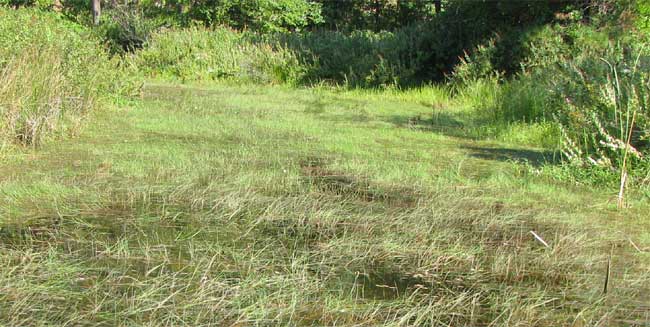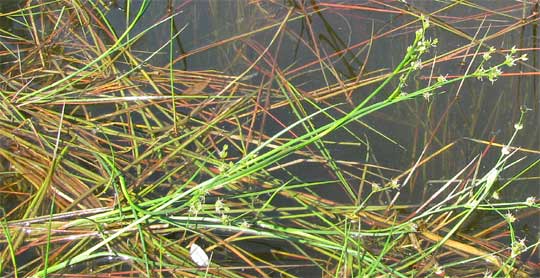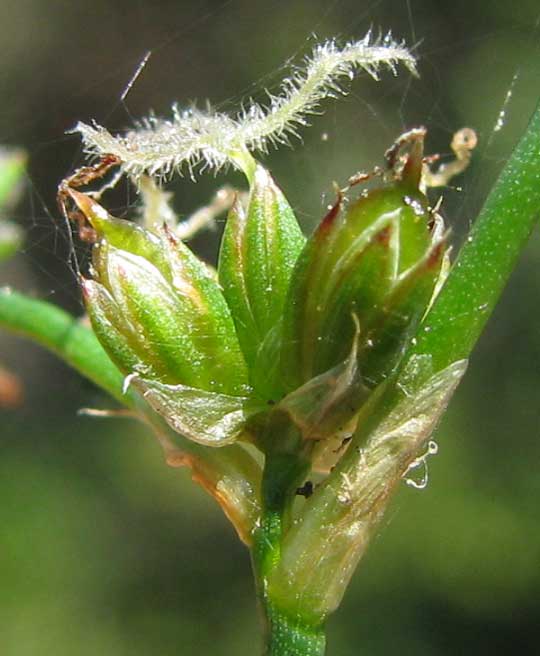Excerpts from Jim Conrad's
Naturalist Newsletter

from the the August 9, 2009 Newsletter, issued from the Siskiyou Mountains west of Grants Pass, Oregon:
A POND OF "GRASS"
In the pond above my trailer about a month ago slender spikes of "grass" began poking above the water's surface. As stems and blades rapidly elongated mostly they tipped over and began floating, creating the water-clogged, "pond of grass" shown above. Now the "grass" is issuing flower clusters, shown below:

A close-up of individual flowers is seen below:

In the last picture the white, fuzzy items at the top are three stigmas, fuzzy to catch pollen that germinates there and sends a pollen tube down through the slender style below the stigmas into the roundish ovary below. Inside the ovary, ovules fertilized by the pollen's male sex germ will mature into seeds, and the ovary will become a capsular fruit.
You can see from the flowers that this isn't a grass at all. Grass flowers don't have petal- and sepal-like appendages surrounding a spherical ovary like this. What we have here is a rush of the Rush Family, the Juncaceae. It's the Jointed Rush, JUNCUS ARTICULATUS. The best-known rush, or fellow member of the genus Juncus, is Path Rush, a wiry, foot-tall, tufted plant common along trails in woods and weedy places, and with flowers similar to those in the picture.
Jointed Rush is native not only to North America (but not most of the US Southeast and some central states) as well as to Europe, Asia and North Africa. In fact, it's such an adaptable, even aggressive plant that it's become a waterway-clogging aquatic weed in South Africa, Australia and New Zealand.
When I waded into the thigh-deep pond for pictures, one reason this species spreads so easily quickly became apparent. I used an opening through the cattails where deer and other animals enter the pond at night, leaving a trail through the rush-clogged water like an icebreaker trail through ice. As an animal wades across the pond, the rush's stems break and float to the surface and the stems' nodes often bear both roots and young sprouts, as you can see below:

In that picture the green, horizontal spike is the shoot -- technically known as a tiller -- and the tan, stringy things arising from the tiller's base and dangling downward are roots. Looking behind me where I'd waded I found several rooted tillers loose on the pond's surface. All they needed now was to reach mud, root, and join in the fun clogging the pond.